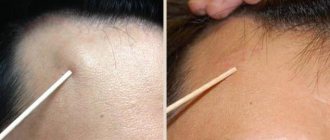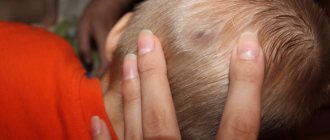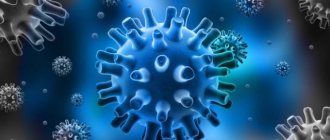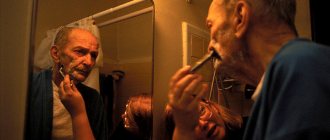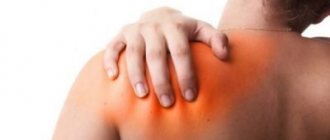If a lump appears on the skull, a person should definitely visit a doctor, because this symptom cannot be ignored. The exception is the situation when there was a small bruise, due to which a seal appeared. It is not recommended to engage in treatment on your own, because it may not be effective or even cause harm. A timely visit to the doctor will allow you to make an accurate diagnosis, as well as begin the correct therapy. A hard lump on the back of the skull is not in all cases as safe as many people would like.
Causes
Doctors who deal directly with skin problems are often asked why large red spots, or resembling a rash from hives, can sometimes appear under the hairline. When answering this question, any specialist will emphasize that the main reasons for this phenomenon lie in disruption of the normal functioning of the digestive system, hormonal imbalances or weakened immunity.
These factors can be identified and eliminated only with the help of a doctor, but there are also more rhetorical prerequisites that contribute to the occurrence of a misfortune. These are numerous exogenous causes that increase the risk of acne appearing on the head of an adult:
- Red spots can appear when a person washes his hair very often or starts using the wrong shampoo.
- Pimples can also appear on the head due to exposure to cold. Cold rashes are provoked by the preference of some people to walk without a hat in the autumn-winter period.
- Also, the appearance of this scourge is directly related to the fact that bed linen made of low-quality synthetic material was chosen for a night's rest.
- A rash on the head can also be a side effect of taking certain medications, as well as a consequence of stress or overwork.
The mechanism for the occurrence of acne on the head, provoked by the above risk factors, is quite simple. It lies in the fact that the pores on the scalp become clogged due to excessive activity of the sebaceous glands. In addition to sebum, dust and dirt that enter the hair from outside settle in them. Such a substrate is favorable for the life of pathogenic bacteria, which provoke the occurrence of inflammation under the hair.
Cones in children
Of course, if a lump appears on the back of the child’s head, then you will definitely need to visit a medical specialist. Parents should not ignore an alarming symptom, because it is not safe in all cases. Of course, a lump may appear due to injury if the baby hits a hard object or gets bruised while playing. Considering the fact that children's skin is extremely sensitive, bumps often occur.
In this case, a neoplasm can arise not only due to injury. For example, this may be an enlargement of the lymph nodes, which indicates an inflammatory or viral or bacterial process in the body. Often, pathology occurs due to the fact that the child’s immunity is significantly reduced. In any case, you should consult your doctor about this.
Atheroma is a fatty tissue that can occur in the back of the head due to clogging of the sebaceous glands. It often forms when a child does not follow the rules of personal hygiene well. The disease also worries those whose sebaceous glands do not work properly.
Of course, any pathology cannot be ignored, since not all bumps go away on their own. You will need to see a doctor so that you can get diagnosed and begin treatment. The person will be sent for a general blood test, and may need to undergo an ultrasound, x-ray and tumor marker. After this, the specialist will be able to draw a conclusion about what exactly you have to deal with.
If we talk about treatment, it depends on the type of pathology. If an injury occurs, applying a cold bandage may be enough to relieve symptoms. If there is a lipoma or atheroma, then surgery is prescribed to remove the lump. In the case of enlarged lymph nodes, the causes of their appearance will need to be eliminated.
If measures are taken in a timely manner, then in most cases there will be no harm to health. The main thing is not to put off visiting a doctor and do not wait until the disease has started. If the lump does not go away within two days, or gets worse, then you definitely need to visit the hospital.
Types of defects
Specialists dealing with skin and hair problems do not divide rashes and red pimples into any special types. But this is only theoretical. In fact, skin defects that appear on the head and are accompanied in most cases by severe itching, for the convenience of their classification, are divided into 2 main types:
- Comedones, non-inflammatory rashes that look like blackheads. Each such point, over time or under certain negative circumstances, transforms into a pus-filled acne.
- Inflammatory acne. These are, essentially speaking, the same comedones, only infected. The inflammation that develops in them as a result leads to the formation of pustules, internal pustules with a white head on the surface of the skin, and papules, red nodules located on the surface of the skin and having a dense structure.
These pustular formations have different development mechanisms and accompanying symptoms, so treatment methods for their formation must be selected for each patient individually.
How to make a beautiful cone of hair on your head: step-by-step instructions
Follow our step-by-step instructions to create a classic bun hairstyle:
- Comb your hair thoroughly.
- Gather your hair into a ponytail and secure with an elastic band.
- Take the bottom strand from the ponytail and wrap it around an elastic band. Secure the tip with a bobby pin or hairpins.
- Separate the remaining hair and twist it into bundles. The more bundles, the more magnificent the lump will be.
- Lay the strands around the tail and secure with hairpins.
- Fix your hair with spray or hairspray.
Symptoms
A harbinger that warns that acne will appear on the head under the hair in the near future is itching. If you move the hair apart at this time, in the place of discomfort you can see a red spot, which can have different sizes. Further progression of cosmetic pathology proceeds as follows:
- A day after a very itchy area appears on the head, a small elevation with a hard structure forms in its place along the hairline. The skin around it becomes very tight, causing people with these pathological formations significant discomfort and discomfort.
- The third and fourth days of development of a destructive formation on the head are characterized by the fact that it increases in size due to the accumulation of pus in its internal cavity. At this time, when a person touches the affected area, he feels quite severe pain.
- After 5 days from the moment pimples appeared on the head, the film covering the cavity with purulent contents bursts and it flows out.
These pathological formations that appear on the head, in some cases, can accumulate in one place, forming a rather large inflamed area on the scalp. The main place of their localization is the temporal regions, the place of direct connection of the frontal part with the hairline, the parting, the crown, the back of the head and the area bordering the neck.
Hemangioma
This is a fairly large bump on the head, which occurs due to out-of-control vein growth. This formation is red in color, and the skin underneath is dotted with small vessels. It should be especially noted that this is the most dangerous type of all buds. After all, hemangioma leads to the destruction of all nearby tissues. Moreover, it is prone to malignancy. By the way, this formation can appear not only on the head, but also on the mucous membranes, neck, face and behind the ears. This tumor should only be treated by a specialist.
Treatment
If purulent pimples begin to appear under the hair, urgent treatment is required. The success of therapy when this cosmetic scourge occurs in a person depends on at what stage of development it was discovered and subjected to special treatment procedures aimed at eliminating it. It is strictly forbidden to carry out independent therapeutic measures for this cosmetic pathology, as they are fraught with aggravation of the disease.
The protocol for drug treatment, which for the most part consists of the use of topical agents, is selected by the attending physician for each specific patient on an individual basis. He must take into account the stage of development of the pathology, the severity of the cause that provoked it, as well as the type of skin of the person affected by this scourge. The basic principles of local therapy are as follows:
- The patient's use of exfoliants is a group of medications that contain salicylic, glycolic and lactic acids. The effect of this acid complex promotes effective cleansing of pores, which becomes possible after these substances soften sebaceous plugs.
- In order for the skin cells affected by inflammatory pathology to be replaced with new ones, patients are prescribed medications belonging to the retinoid drug group.
- Obtaining an antibacterial effect is possible when using ointments and creams containing the active substance benzoyl peroxide, the concentration of which is 5–10%, for local treatment.
- In addition, doctors recommend sprinkling baby powder on areas of inflammation treated with ointments, which will prevent the greasy composition from smearing through the hair.
If the form of acne that appears on the head is very severe, experts recommend oral administration of antibacterial agents that have a wide spectrum of action. At the same time, zinc preparations and medications that have an inhibitory effect on pathogenic fungi and microorganisms should be prescribed.
Pimples
If the bumps on your head hurt and itch, it could be regular acne or marks from insect bites. As a rule, after a few days such formations disappear on their own.
It is no secret that after a severe injury to the head, a lump may form on it. To prevent such swelling from occurring, it is recommended to apply a cold compress to the injury site immediately after injury.
Traditional methods
Recipes collected in the treasury of folk wisdom are an invaluable aid for drug therapy. They are highly effective and very popular among patients with this scourge, but do not forget that it is prohibited to use them for treatment without consulting a specialist!
When prescribing treatment, dermatologists most often recommend the use of the following folk remedies:
- If the pimples that appear on your head are itchy, apple cider vinegar will be effective. One hundred grams of this product is diluted in the same amount of cool water and mixed. This composition is used to rinse hair after washing. According to patient reviews, after using it, the head stops itching.
- High efficiency is also observed in the preparation made from honey and cinnamon, which is indispensable in the case when the resulting defect is very itchy.
Summarizing why pathological acne forms on the head and how to get rid of them, experts dwell on the following points. Due to the fact that the occurrence of the scourge is largely associated with non-compliance with personal hygiene rules and nutritional disorders, patients are advised to radically reconsider their lifestyle. It is also necessary to consult a dermatologist who will help alleviate the person’s condition and gradually completely cope with this cosmetic scourge with the help of appropriate medications.
Atheroma
These are painful bumps on the head that arise due to blockage of the ducts of the sebaceous glands and the accumulation of secretions in them. This formation is dense, often has a round shape and is characterized by slow growth. In some cases (for example, when bacteria enter), the atheroma may become inflamed and red. In addition to the scalp, such bumps appear on the neck and face.
